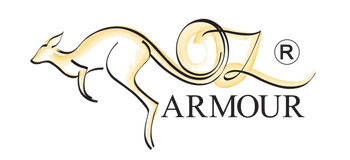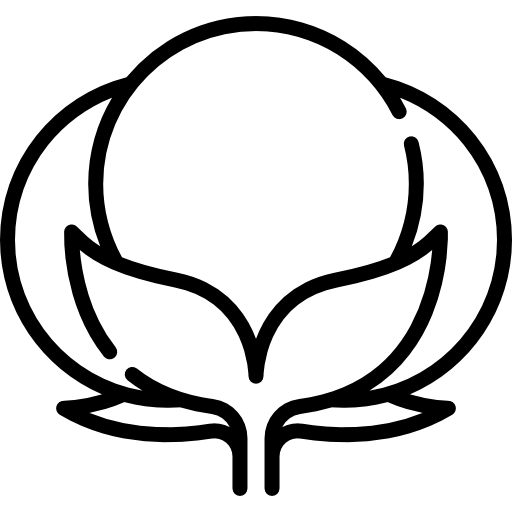Der Honigbienenkönigin ist das Herz und die Seele eines blühenden Bienenstocks. Ihre Gesundheit und Produktivität sind entscheidend für den Erhalt eines robusten Volkes. Als Imker ist es wichtig zu wissen, wie man seine Bienenkönigin identifiziert und pflegt. In diesem Leitfaden gehen wir auf die Rolle der Honigbienenkönigin ein, wie man sie identifiziert und wie man sie am besten pflegt, um ihre Gesundheit und Produktivität zu gewährleisten.
Die Rolle der Honigbienenkönigin verstehen
Die Königin der Honigbiene spielt eine wichtige Rolle im Bienenstock. Zu ihren Hauptaufgaben gehören das Eierlegen und die Produktion von Pheromonen, die die Aktivitäten des Volkes regulieren. Die Anwesenheit der Bienenkönigin beeinflusst jeden Aspekt des Bienenstocks, vom Verhalten der Arbeiterinnen bis zur Honigproduktion.
Rolle und Pflichten der Bienenkönigin
Die Bienenkönigin ist für die Eiablage im Bienenstock verantwortlich. In der Hochsaison können es bis zu 2.000 Eier pro Tag sein. Diese hohe Legereife sorgt für einen stetigen Bestand an Arbeiterbienen, die für die Nahrungssuche, die Aufzucht der Larven und den Erhalt des Bienenstocks unerlässlich sind. Darüber hinaus tragen die Pheromone der Königin zur Aufrechterhaltung der sozialen Ordnung im Bienenstock bei, signalisieren den Arbeiterbienen und gewährleisten so das reibungslose Funktionieren des Bienenvolkes.

Identifizierung der Honigbienenkönigin
Die Königin der Honigbienen unter Tausenden von Arbeiterbienen zu entdecken, kann eine Herausforderung sein, doch mit etwas Übung und Geduld wird es leichter. Bei der Identifizierung der Bienenkönigin gibt es mehrere wichtige Merkmale, auf die man achten sollte.
Die Bienenkönigin ist größer als die Arbeiterbienen und hat einen längeren Hinterleib, der über ihre Flügel hinausragt. Ihre Größe lässt sie selbst in einem überfüllten Bienenstock auffallen. Im Gegensatz zu den Arbeiterbienen hat die Königin einen glatten, glänzenden Thorax und einen ausgeprägteren, schlankeren Körper. Ihre Flügel sind im Verhältnis zu ihrer Körpergröße kürzer als die der Arbeiterbienen.
Die Bienenkönigin bewegt sich zielstrebig und ist oft von einem Gefolge von Arbeiterbienen umgeben, die sie füttern und pflegen. Die Beobachtung dieses Verhaltens kann Ihnen helfen, ihren Standort im Bienenstock zu bestimmen.
Bedeutung einer gesunden Bienenkönigin
Eine gesunde Bienenkönigin ist für das allgemeine Wohlbefinden des Bienenstocks von entscheidender Bedeutung. Ihre Gesundheit beeinflusst direkt die Population und die Honigproduktion des Bienenstocks. Für ihre optimale Gesundheit zu sorgen, ist eine wichtige Aufgabe jedes Imkers.
Anzeichen einer gesunden Bienenkönigin
Eine gesunde Bienenkönigin weist ein gleichmäßiges Legeverhalten auf und füllt die Waben gleichmäßig und dicht mit Eiern. Das Vorhandensein von verdeckelter Brut (Puppen) in verschiedenen Entwicklungsstadien ist ein guter Indikator für ihre Produktivität. Darüber hinaus hat eine gesunde Königin ein robustes und glänzendes Aussehen ohne sichtbare Anzeichen von Krankheiten oder Verletzungen.
Pflege Ihrer Honigbienenkönigin
Zur richtigen Pflege Ihrer Honigbienenkönigin gehört eine regelmäßige Überwachung und Pflege, um sicherzustellen, dass sie weiterhin gedeiht und die Kolonie effektiv führt.
Pflege der Bienenkönigin und bewährte Verfahren
-
Regelmäßige Inspektionen: Führen Sie regelmäßige Kontrollen des Bienenstocks durch, um die Gesundheit und das Legeverhalten der Königin zu überwachen. Achten Sie auf Anzeichen von Krankheiten oder Schädlingen, die sie befallen könnten.
-
ErnährungSorgen Sie für ausreichend Nahrung im Bienenstock, insbesondere in Zeiten der Nahrungsknappheit. Eine zusätzliche Fütterung mit Zuckersirup oder Pollenpastetchen kann zur Gesundheit der Königin beitragen.
-
Schutz: Schützen Sie die Königin vor Raubtieren und Umweltstressoren. Verwenden Sie Absperrgitter, um zu verhindern, dass sie sich in Bereiche des Stocks wagt, in denen sie gefährdet sein könnte.
-
Überwachung: Behalten Sie die Leistung der Königin im Auge. Wenn Sie einen Rückgang der Eierproduktion oder Anzeichen von Alterung feststellen, sollten Sie einen Austausch in Erwägung ziehen, um die Produktivität des Bienenstocks aufrechtzuerhalten.
Häufige Probleme und Lösungen
Trotz aller Bemühungen können Probleme mit der Honigbienenkönigin auftreten. Es ist wichtig, sich der häufigsten Probleme bewusst zu sein und zu wissen, wie man sie behebt.
Probleme und Lösungen mit Bienenköniginnen
-
Krankheiten und SchädlingeKrankheiten wie Nosema und Schädlinge wie die Varroamilben können die Gesundheit der Königin stark beeinträchtigen. Regelmäßige Kontrollen und Behandlungen der Bienenstöcke sind unerlässlich, um diese Gefahren in Schach zu halten.
-
Schlechte Paarung: Eine schlecht begattete Königin legt unbefruchtete Eier, was zu einem Populationsrückgang führt. Bei Verdacht auf eine schlechte Begattung sollte die Königin durch eine neue, gut begattete ersetzt werden.
-
AlternKöniginnen bleiben in der Regel 2–3 Jahre produktiv. Mit zunehmendem Alter nimmt ihre Legeleistung ab. Um die Produktivität des Bienenstocks zu gewährleisten, sollten ältere Königinnen ersetzt werden.
Ersetzen der Honigbienenkönigin
Um die Gesundheit und Produktivität des Bienenstocks zu erhalten, ist es manchmal notwendig, die Königin zu ersetzen. Zu wissen, wann und wie sie ersetzt werden muss, ist für Imker eine wichtige Fähigkeit.
Ersetzen der Bienenkönigin und Einführen einer neuen Königin
-
Timing: Ersetzen Sie die Königin, wenn sie Anzeichen einer nachlassenden Gesundheit oder einer schlechten Eierproduktion zeigt oder wenn der Bienenstock aggressiv oder unproduktiv wird.
-
Verfahren: Wenn Sie eine neue Königin einsetzen, verwenden Sie einen Königinnen-Einführungskäfig, um den Bienenstock allmählich an ihre Anwesenheit zu gewöhnen. Dies verringert das Risiko, dass die Arbeiterbienen sie ablehnen oder verletzen.
-
Beobachtung : Beobachten Sie den Bienenstock nach der Einführung der neuen Königin in den ersten Wochen genau, um sicherzustellen, dass sie akzeptiert wird und mit dem Eierlegen beginnt.

Wählen Sie OZ Armour für hochwertige Imkeranzüge und -handschuhe
Für die besten Imkeranzüge und Handschuhe sind Sie bei OZ Armour genau richtig. Unsere Imkeranzüge bieten maximalen Schutz und Komfort und sorgen dafür, dass Sie sicher und effizient mit Ihren Bienen arbeiten können. Wir bieten auch hochwertige Imkerhandschuhe Entwickelt, um Ihre Hände zu schützen und gleichzeitig die nötige Fingerfertigkeit für den Umgang mit Ihrem Bienenstock zu ermöglichen. Vertrauen Sie OZ Armour für alle Ihre Imkereibedürfnisse und sorgen Sie mit der besten verfügbaren Ausrüstung dafür, dass Ihre Honigbienen, Königin und Kolonie gedeihen.
Abschluss
Die Identifizierung und Pflege der Bienenkönigin ist grundlegend für eine erfolgreiche Bienenhaltung. Ihre Gesundheit wirkt sich direkt auf die Produktivität und Stabilität des gesamten Bienenstocks aus. Indem Sie ihre Rolle verstehen, lernen, sie zu identifizieren und bewährte Methoden für ihre Pflege anwenden, können Sie ein blühendes und produktives Volk gewährleisten. Regelmäßige Überwachung und proaktives Management sind entscheidend, um die Gesundheit der Königin zu erhalten und auftretende Probleme zu beheben.
Denken Sie daran: Eine gesunde Bienenkönigin führt zu einem gesunden Bienenstock. Schenken Sie ihr also die Aufmerksamkeit und Pflege, die sie verdient, damit Ihre Bienenzucht erfolgreich bleibt.












